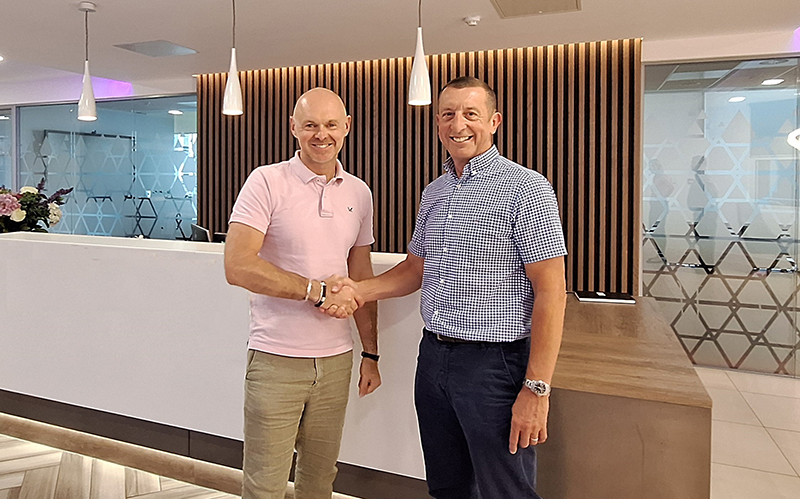
FAMILY-owned Mac Mic Group has achieved a major milestone for the business after entering into an agreement with Aggreko UK for a 45-year period to develop a solar park in Inchinnan, Renfrewshire.
The project, which has already received planning permission from Renfrewshire Council, will be capable of generating up to 20 megawatts of clean energy, which can be fed back into the electricity grid. Once complete, Mac Mic said the park will generate enough electricity to meet the annual needs of over 5,000 properties.
Andrew Mickel, director at Mac Mic Group, said, “This agreement represents a further milestone in our company’s history and delivers part of a strategy to explore renewable energy projects on our land holdings. I’d like to thank the team at Aggreko and we look forward to a long and successful partnership with them. We are actively looking at other opportunities in our land portfolio to replicate this successful project. I would personally like to give thanks to Bruce Hampton, his exceptional work on this deal was instrumental to its success.”
Bruce Hampton, regional land director (Scotland) at Mac Mic Group, added, “This project sets a new standard for sustainable development in Renfrewshire, as acknowledged by the council’s planning and climate change policy board. The project is a great example of how Mac Mic Group has utilised our experience and land holdings to generate long-term value for our shareholders, whilst also playing our part in the UK energy transition to net zero.
“I would like to give thanks to our wider project team, the local ornithological group, the RSPB, NatureScot and Renfrewshire Council planning team for their valuable insight and input to make this project happen.”
Chris Rason, MD, energy solutions at Aggreko, commented, “This project is a leading example of energy diversification in Europe. We have significant experience across the globe supporting such projects, so it’s fantastic to see one come to fruition so close to our home in Scotland.”
Located between Greenock Road and Houston Road, the solar park has been designed to minimise its impact on the local environment, Mac Mic added. The project team prioritised enhancing biodiversity and worked with local experts. Through surveys, the RSPB identified key areas for habitat enhancement. The design includes bird boxes and shallow scrapes in the soil to provide suitable habitats for wading birds, while the site’s current arable nature provides a natural food source for whooper swans after harvest. In collaboration with the RSPB, Mac Mic implemented an additional conservation measure by designating areas outside the solar park for sacrificial crops.
To the north of the site, areas of scrub, native broadleaf woodland and riparian woodland have incorporated to enrich the local ecosystem. The solar panels, mounted on low-profile frames, will cover only 51% of the site, allowing for sufficient sunlight to reach the ground and support wildlife.
Mac Mic’s consultancy team included Savills, Greenspan, ICENI, Brindley Associates, Bayne Stevenson Associates, ECS Transport, and Bureau Veritas.










